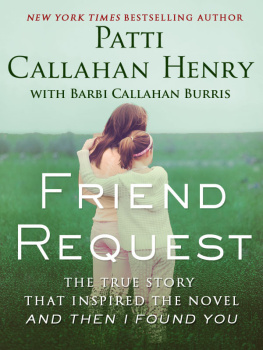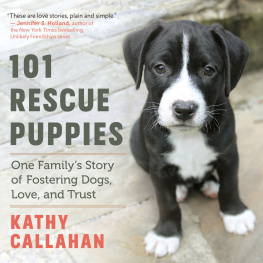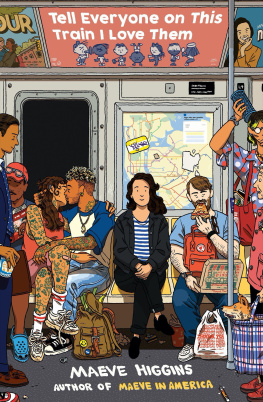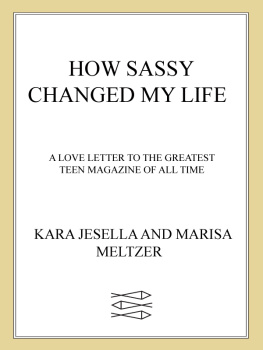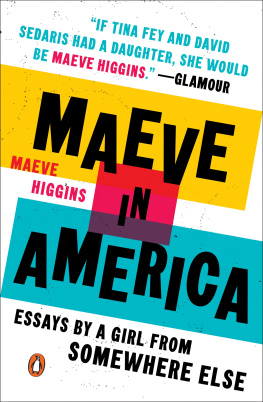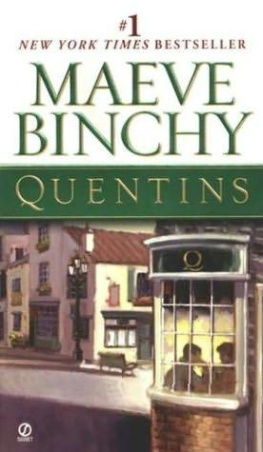ACKNOWLEDGMENTS
I had always hoped that I would bring something of worth to the writing, but I soon discovered that it was the other way aroundwriting has enriched my world in many ways, and one of the most beautiful of these ways is the heart-expanding friendships Ive discovered along this journey of publication. This story is more complete because of many friends, family members and colleagues, and I am indebted to every single one of them.
First I must express my gratitude to those integral in the formation of this novel. Kimberly Whalen is beyond an agent. She is a genius in storytelling and thematic structure; this novel is richer, deeper and cleaner because of her understanding of the storys heart. Ellen Edwards is an editor of such immense patience, acuity and thoughtful, cohesive editing that I express my esteem with a humble heart. I want to thank Laura Zidar of the PGA TOUR for her expertise and kindness while answering my numerous questions about the golf tour; if I have made any mistakes describing the tour, they are my fault alone. I am, as always, grateful to Sandee O for being willing to share her expert knowledge about cameras and photography.
I want to extend my heartfelt gratitude to those who have entered my life through this wonderful world of writing, and therefore enriched my writing with their friendship and insight. To Mary Alice Monroe, lyrical, gentle in spirit and wisdomI am honored to call you friend; to Marjory Heath Wentworth, South Carolina Poet Laureate, who can light a room with her very presence; to Dorothea Benton Frank, a wild Irish soul whose very words can lift a spirit to greater heights; to Annabelle Robertson, whose wit and genuine warmth has brought raucous laughter to many a dreary day; to Jackie K. Cooper whose generosity and authentic heart know no bounds; to Gracie Bergeron at the Margaret Mitchell House, I am grateful for your joy in life, even in the harder timesyou are an example of a courageous woman; to Mary Kay Andrews, who makes me laughand what is better than that?; to Haywood Smith who always, above all things, has an awe-inspiring faith. All of you encourage and inspire me.
To those at Penguin Group (USA) and New American Library who support my work, I am continually thankful. To Kara Welsh, Leslie Gelbman, Claire Zion, public relations extraordinaire, Carolyn Birbiglia, and members of the sales, art, and marketing departments who make sure these stories reach readersalthough words are not enough, I am extremely thankful.
My family is the solid ground upon which everything else works and I love you with everything I have: Pat, Meagan, Thomas and Rusk, I couldnt do any of this without you. To Anna Henryyour courage has been an inspiration to keep going when the going gets tough.
And, of course, this novel would not exist without the support of the readers, librarians and booksellers who read and believe in my work. I will never know all your names, but please know I am infinitely grateful for your support. To all those who came to signings and readings, to those who threw parties and events, to those who reviewed and wrote articles about the previous booksthank you.
My longtime friends are generous, kind, warm, funny and supportive. What more could a girl want? I wish I could thank every single one of you by nameyou keep me sane and I love all of you.
CONVERSATION GUIDE
WhenLightBreaks
PATTI CALLAHAN HENRY
This Conversation Guide is intended to enrich the
individual reading experience, as well as encourage us
to explore these topics togetherbecause books,
and life, are meant for sharing.
A CONVERSATION WITH PATTI CALLAHAN HENRY
Q. What inspired you to write When Light Breaks?
A. I am fascinated by the power of story to change lives. I wanted to write a novel in which one womans story moves another woman in a positive direction. I believe that our minds communicate through reason and intellect, but the heart communicates through story. If Kara were to change her life, it would never be by logic alone, since the reasons for her life decisions are sure and strong. But through story, and its effect on her heart, she gains new insights, which help her take her life in new directions.
Q. The idea of one generation passing on its stories to another generation lies at the heart of this novel. Why is that theme important to you?
A. In todays world, the different generations are separated much more than in previous generations, since we tend not to live together. Yet the wisdom and wit passed from one generation to another are what help tie families together. Kara lost her mama at a young age, and she yearns for the mother-daughter connection, the wise advice that comes from experience. Although Kara doesnt understand it at first, Maeves words fill a need in her. I believe we must learn from previous generations, from those who have gone before us in this life journey.
Q. Theres a strong Irish element in the novelof Irish poetry and politics, story and myth. Can you comment on this choice?
A. The Irish culture is incredibly rich in myth and legend. My daughter is an Irish dancer, I am Irish, and the culture fascinates me. I wanted to delve deeper into the idea that a story or legend holds truth, although it might not be factually true, and how, either way, this affects the listener or reader.
Through centuries of conquest and persecution, the Irish have held steadfastly to their unique heritage and storytelling. The Gaelic word for storyteller is seanachie, and these individuals are highly revered. One of the many themes in Irish legend is the presence of the sacred in ordinary daily life, and this is what I wanted to convey to, and for, Kara through an Irish storyteller.
Q. Water plays an important symbolic role in the novel. Would you say a few words about the various ways you use water, and what it means to you?
A. Water is symbolic in numerous and varied ways depending on culture and interpretation. In this novel, water suggests Karas internal struggle. Rivers represent the linear aspect of time; water is where reflectionliteral and figurativeoccurs for Kara. The reliability of tidal and oceanic movements represents security for Kara in an unsure world, where people have left her. The fog and mist are in-between states for Kara, places where she is confused. Places near water are where she is quiet enough to hear the hints of her heart. Water surrounds the place where she lives and therefore represents more than one thing for her: time, security, movement, change, new life and, of course, personal reflection.
Q. Theres also a lot of angel imageryKara and Jack make sand angels on the beach; Kara finds a stone angel with a missing wing and then, at the end of the novel, its unbroken mate; Kara is sometimes described as looking like an angel. What is the significance of this image for you?
A. Kara has an open, aching, missing place in her heart since she lost her mama at such a young age. She is constantly searchingeven when she doesnt know itfor some authentic way to fill that loss. I wanted the reader to understand that there is something going onbeyond Karas everyday, rational and busy worldthat is influencing her life, moving her toward fulfillment and authenticity. I wanted to hint at the sacred in Karas life under the influence of Maeve Mahoney.
Q. Once again, you set your novel in the Lowcountry off the coast of South Carolina, in the fictional town of Palmetto Pointe. Its a place where Southern tradition is juxtaposed against nouveau wealth, where Karas brother chooses to live in a simple, old beach house while her fiancs mother lives in a huge, heavily designed new home. Describe the tensions between old and new that you see being played out in the Lowcountry today.


